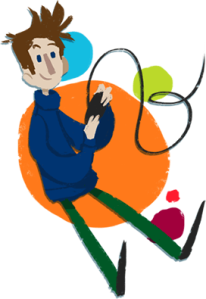AC 230: A Learning Experience
This semester has been quick yet learning effective. I have learned so many things that I can incorporate in my classroom as a teacher. I have always used power point as a tool to share information however I have learn how to make my power point presentations more effective by considering elements such as spacing, font, bullet points and video insertion. Another cool lab activity that I enjoyed as using the inspiration program to develop my own concept map. This can be very effective in the learning process because it can help students to identify themes and link them together. Another lesson I found helpful was the excel lesson. As teachers we are constantly analyzing data. Excel helps to organize and quickly access data with a click of a button. Excel will be very useful to me as a teacher because it speed up the process of evaluating student’s weakness and strengths giving more time for developing differentiated plans to meet the needs of each individual student.
Not only have I learned about programs that can be very useful in my teaching career, I have also change my way of thinking especially in the area of gaming. The video, learning with Games by Kate Salen change my view on games on a whole. One of the key ideas that she shared in the video that stood out to me was when she related games to good teaching. She stated that “games look a lot like good teaching” in the sense that they have a clear sense of mutual challenge, it uses scaffolding, has differentiated instruction and is a constant form of assessment. These points got me thinking of how I can change my style of teaching to appeal to my students in order to get them more engaged in their work both in and out the classroom.
The next big technological advancement I crave to see in schools would be to increasing the amount of computer usage as it is required in the time we live in. It would also be nice to have digital versions of textbooks in the classroom that can be accessed at home as well. This can help students who may have impairments who my need a larger print and it can also save paper.

Reflection #3
Learning through games has been the standard in growing individuals. From the time a person is born till they enter the school system even throughout their adulthood, games had been a fun way of learning. More recently Games have become a more common practice in the classroom. Teachers now use games as a technique to engage their students and make the lesson more meaningful to them. However when using games for educational purposes it is important to make sure the games related to the class content are not only entertaining but changeling as well. During the lab session I selected a few games to play. A few of which I played at home with my five year old daughter. The site I selected for my daughter was the pbs kids website. I gave her the option to select what game she wanted to play and she enjoyed them. However I found that she was easily bored with the games. Having games that are repetitive may be good in some aspects when it comes to learning material but may not work in the students favor. The games on this site were fun but there were not many levels for each game, so the games were not as challenging and did not require much thought. In addition the game did not require that you take much risk. “In fact, in a game, failure is a good thing. Facing a boss, the player uses initial failures as ways to find the boss’s pattern and to gain feedback about the progress being made”(Gee 2013). Risk taking may allow failure to occur but it is through failure where learning becomes most meaningful. According to Katie Salen in the video Learning with games she referred to games as a forgiving environment for kids to fail in. Unlike the classroom students may feel more comfortable with failing in a game as oppose to failing in the classroom because in a classroom setting students may not feel comfortable with showing their peers that they might not understand the work as well as they do. Games allow the student to fail and receive individualized feedback that they might not always get in the classroom.
Games in classrooms can relate to the use of smartboards. Having a smartboard in the classroom is an engaging tool. It allows the student to have a visual and tactile tool as well as connect with others through projection from a smaller computer. For example I observed a teaching using the smartboard to play a game of mathematical jeopardy. The kids drew on the prior knowledge of the content and it was an enjoyable experience for them as well. When designing a smartboard lesson plan it is important to think of collaboration. The students will need to use their knowledge to help others not only themselves. It is also important to diversify assessment. The traditional ways of assessment can no longer be the norm. Interacting activities allows the student to self-assess this way the student own their learning.
Katie Salen on Learning with Games: http:/www.youtube.com/watch?v=xV_VlhV99EA
James Gee on Good Games and Good Learning: http://www.academiccolab.org/resources/documents/Good_Learning.pdf
Reflection #2
Educational Psychologists Benjamin Bloom conducted a study in 1984 which was published in the Educational Journal. This study showed that students who got individualized instructions scored much higher than those who received group instructions. This raises the question if students should be given equitable learning opportunities. Many may ask how one can receive individualized yet equitable learning opportunities. I do not believe that this is a contradicting statement for the reason that the school system has changed drastically. Not only has the curriculum change the students who make up the system have changed as well. There are many students coming from different countries and over the years the population of both English Language Learners and Special needs students has grown vastly. As the schools continue to change in this way the learning opportunities must also change. In order to give students equitable but individualized learning opportunities a teacher can result to having break out session in which he/she might meet in small groups with students in order to address any difficulty they may have. In some cases some a prep period, after or before school hours can be given to students who need the extra help to excel. However this requires commitment from the school, teacher, student and parent in order for this plan to be proficient to the students’ academic success.
